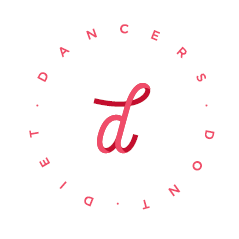Eating Disorders and Body Image Concerns in Dancers
One in EIGHT dancers, and one in SIX ballet dancers, experience eating disorders.
This is a shockingly high rate.
We have been, and still continue to, bring awareness to this issue that’s often treated like a taboo topic in the dance world, at various conferences and workshops.
This time we had the honour of working with One Dance UK to bring this topic to the readers’ attention - we were grateful that they reached out after they heard us (with the great Shane from River Oak Health) speak at the RAD Conference 2020.
Facts on Dance Nutrition
1 in 3 teenage dancers are at risk of iron deficiency
1 in 3 teenage dancers engage in disordered eating behaviours (these are risk factors for developing an eating disorder)
Dancers with inadequate nutrition have higher incidences of injury
The most common nutrition that’s omitted by dancers is carbohydrate
What we know is that dancers with inadequate nutrition have higher incidences of injury.
5 steps to optimise nutrition for dancers
Regular rhythm: Fuel regularly throughout the day to support your activities
Adequate energy and nutrition: Eating enough helps prevent injuries
Enjoy a variety of foods: Your body needs all food groups, and treat carbs and proteins and fats equally (there’s no reason why protein should be put on the pedestal and for carbs and fats to be demonised, they are ALL needed)
Hydrate well
Optimise bone health: Calcium-rich foods can be from dairy or non-dairy, again neither is more superior or inferior than the other
And the most important bonus step to opitimise nutrition for dancers is:
Dancers Don’t Diet
Nutrition issues in dancers are mainly about “not eating enough”, and rarely about “not eating enough veg” (and yet sooo many teachers push their dancers and students to eat veg, which creates this vicious cycle of not getting enough energy to support the dancing).
That’s why it’s so important not to follow diets. This includes “lifestyle” trends that ultimately aims for weight loss.
One thing to be clear: Ballet and dance itself does not CAUSE eating disorders.
Eating Disorders are very complex illness, with psychological and metabolical factors, as well as genetics and environmental factors coming into play.
The One Dance UK magazine article was published in the Spring edition 2021.
The online version is available for download from Issu here.
Thank you to Dani for the great illustrations, and Cameron for making sure that are messages were reflected properly.
We asked them to ensure that the illustration used in the article portrays diversity and inclusion, and they’ve certainly made that happen!
I’ve had many experiences where unhelpful photos and illustrations were put in by editors despite asking them not to, so it means a lot that One Dance UK team reflected our message.
References
Beck, K. L., Mitchell, S., Foskett, A., Conlon, C., & Von Hurst, P. R. (2015). Dietary Intake, Anthropometric Characteristics, and Iron and Vitamin D Status of Female Adolescent Ballet Dancers Living in New Zealand, International Journal of Sport Nutrition and Exercise Metabolism, 25(4), 335-343. doi:10.1123/ijsnem.2014-0089
Thomas, J & Keel, P & Heatherton, T. (2011). Disordered eating and injuries among adolescent ballet dancers. Eating and weight disorders : EWD. 16. e216-22. doi:10.1007/bf03325136
Bowerman, Erin & Whatman, Chris & Harris, Nigel & Bradshaw, Elizabeth. (2015). A Review of the Risk Factors for Lower Extremity Overuse Injuries in Young Elite Female Ballet Dancers. Journal of Dance Medicine & Science. 19.doi:10.12678/1089-313X.19.2.51.
Russell, Jeffrey. (2013). Preventing dance injuries: current perspectives. Open access journal of sports medicine. 4. 199-210. doi:10.2147/OAJSM.S36529.
Arcelus, J., Witcomb, GL., Mitchell A. Prevalence of eating disorders amongst dancers: a systemic review and meta-analysis. European Eating Disorder Review 2013. 22(2),92-101. doi: 10.1002/erv.2271
International Olympic Committee (IOC) Consensus Statement on Relative Energy Deficiency in Sport (RED-S): 2018 Update. International Journal of Sport Nutrition and Exercise Metabolism, 2018, 28, 316-331
